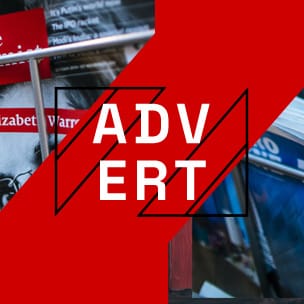“Enduring Protests Indicate Serbia is at a Critical Juncture”
Today, Belgrade is being characterized as a powder keg amidst protests, and it is crucial to analyze how Serbian President Aleksandar Vučić will respond in the coming hours, notes Brent Sadler in an editorial for today’s Guardian. With growing anger over ineffective governance and corruption allegations, Vučić is under intense scrutiny both locally and internationally.
The ongoing student-led protests in Belgrade, now over four months in duration, are revealing the fractures in Vučić’s authoritarian regime. According to the author, public frustration has reached a critical threshold.
As Serbia braces for a significant anti-government protest, thousands of students and citizens have gathered to voice their discontent with the authorities. Sadler points out that many locals refer to Belgrade as a city “under siege,” highlighting the severe measures imposed by authorities that critics claim are intended to intimidate potential demonstrators.
The state-run railway company, Srbija Voz, has abruptly halted all intercity train services, citing unnamed bomb threats as the rationale. Reports have surfaced regarding the cancellation of intercity buses to Belgrade, with rumors suggesting that tractors and trucks are being used as barricades on major routes leading to the capital. The author notes that these unprecedented actions have faced backlash, as many believe the government is effectively isolating Belgrade to stifle the protest movement.
Notwithstanding these obstacles, convoys of students and supporters from various parts of Serbia are discovering alternative routes to reach Belgrade. Many groups, undaunted by governmental tactics, have embarked on their journeys days in advance, on foot or by bicycle, eager to participate in what they perceive as a historic assembly.
Concurrently, Western diplomats are urging Serbian officials to facilitate a peaceful protest environment and ensure participant safety, cautioning that any attempt to suppress the demonstrations might escalate tensions both domestically and on the international stage.
In a stark contrast to the diplomats’ calls for calm, Vučić and his administration are framing today’s protest as a volatile situation ripe for explosion. Officials have been issuing ominous warnings for several days, suggesting that clashes are on the horizon, even hinting that protesters might assault police or attempt to storm the parliament building.
This continuous cycle of alarming rhetoric is utilized by authorities to rationalize a stringent response, evidenced by a significant police presence and pre-emptive security measures throughout Belgrade. Such actions not only heighten tension but also convey an unmistakable message of intimidation, characterizing protesters as a menace to national stability while reinforcing the narrative of governmental control.
The catalyst for this unrest was the tragic collapse of a concrete awning at the main train station in Novi Sad late last year, resulting in 15 fatalities. As noted by Sadler, it ignited widespread protests across Serbia, becoming emblematic of a deeper crisis: a system beset by corruption, inefficiency, and political nepotism.
While claims of extensive corruption can be challenging to substantiate, critics highlight dubious state contracts, political cronyism, and a lack of accountability as pressing concerns. The judiciary is perceived as compromised, the media frequently under assault, and civil society faces mounting pressure. In this context, protests evolve from mere responses to isolated issues to a clarion call for liberation from autocratic rule and its affiliates, it is assessed.
This surge of student discontent transcends a single event—it symbolizes the profound disillusionment of a generation that feels forsaken and betrayed by the entrenched political elite. What is unfolding now is an unprecedented contemporary opposition movement, animated by innovative social media engagement, rapidly extending its influence across Serbia’s towns and cities, according to Sadler.
The scale and tenacity of these protests signify that Serbia stands at a pivotal juncture, with Vučić, once deemed invulnerable, now confronted with a real challenge to his authority. However, despite this widespread dissatisfaction, the West continues to engage with the controversial Serbian leader, claiming it is vital for maintaining Serbia’s trajectory towards the EU.
And perhaps rightfully so, Sadler concludes. Despite the flaws in Vučić’s administration, no clear or viable alternative appears to exist should his grip on power weaken. The political opposition remains fragmented, often more invested in internal strife than in presenting a cohesive vision for the future.
While the EU persists in treating Vučić as a trustworthy partner, it neglects significant issues that warrant alarm. It overlooks his close connections to Vladimir Putin, the expanding Chinese economic influence on Serbian infrastructure, and the reality that the Serbian energy conglomerate NIS is still predominantly owned by Russian interests, even in the face of EU sanctions.
This apparent inconsistency in EU policy raises concerns regarding the bloc’s genuine commitment to its values and its long-term objectives in the region, particularly when pragmatic alliances appear to overshadow principles of democratic governance and geopolitical stability.
On one side, the actions of Serbian authorities and their restrictive measures cultivate an environment of impending crisis. Conversely, the demonstrators—bolstered by moral support from abroad—remain unwavering in their pledge to non-violence.
While Serbia’s ties with Moscow could be viewed as an attempt to balance historical connections with ambitions for EU and NATO membership, questions arise regarding the government’s actual priorities.
Under Vučić’s regime, Serbia has experienced a rise in authoritarian tendencies. Such actions only deepen skepticism about his long-term intentions and priorities. If history demonstrates anything, it is that neglecting the Balkans often leads to unforeseen and far-reaching repercussions, Sadler concludes.
News


